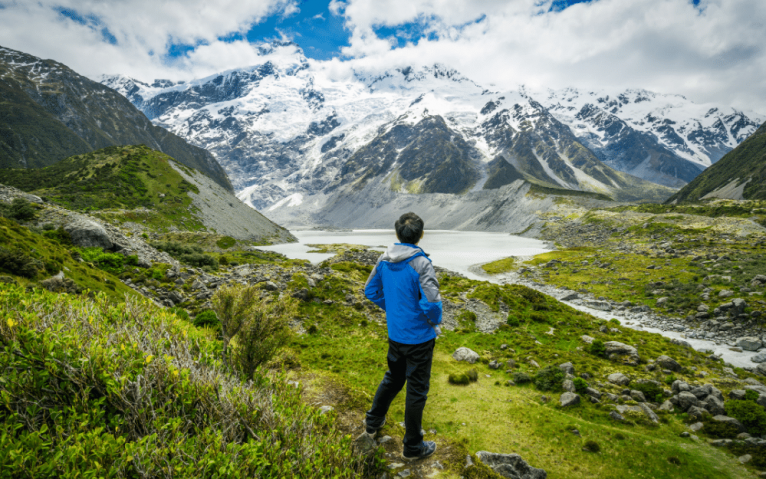In the world of addiction treatment, there are some therapies that are considered to be outside-of-the-box. We know that hypnotherapy is often part of recovering addicts’ treatment plans. There’s research that says a change of scenery can be positive for addiction recovery. So, the next step of that would be to try wilderness therapy. While it sounds silly, wilderness therapy can be significantly effective at treating addiction and other mental health conditions, particularly among adolescents and young adults.
What is Wilderness Therapy?
The core concept of wilderness therapy helps treat disruptive behaviors, particularly for adolescents. It combines therapy with challenges in an outdoor wilderness environment, hence the name. The idea is to kinetically engage patients on cognitive, affective, and behavioral levels.
Also known as outdoor behavioral healthcare, it’s designed to address behavioral problems by encouraging personal and social responsibility, while also contributing to the emotional growth of participants.
When Is It Used?
Usually, wilderness therapy works as an intervention for adolescents with behavioral, mental health, and substance abuse disorders. The idea is to create a shocking experience that will shake someone’s current mental state and kickstart the healing process. It can be successful in treating:
- ADHD
- Anxiety disorders
- Behavior issues
- Depression
- Substance abuse
- Eating disorders
- Mood disorders
- Post-traumatic stress disorder (PTSD)
How Wilderness Therapy Works for Addiction Treatment
There are different types of wilderness therapy programs. There are two main models known as nomadic and basecamp wilderness therapy programs, the latter one is also part of adventure therapy programs.
Wilderness therapy mimics the challenges and pressures often found within families and social structures, but they deliver these in an atmosphere free of negative influences. Patients learn how to develop healthy relationships, respect boundaries, accept feedback, and promote growth. Additionally, participants forge alliances with others for self-preservation and task completion, developing self-confidence, and improving their communication and cooperative skills, as well as trust in others.
Nomadic Wilderness Therapy Model
This program is based on the philosophy that getting someone out of their standard way of living, and moving them to a simpler, distraction-free environment can be helpful. They provide unstructured time and space to give them the space to work through their thoughts, emotions, and disruptive behaviors. The goal of this model is to provide a wilderness experience 24/7. Individuals move to an outdoor location and conduct their business, attend therapy, and plan exploration activities throughout the length of treatment.
- Removal from everyday life. As research shows, a change of scenery and removal from everyday triggers can help those struggling with addiction.
- Reliance on natural consequences. Being immersed in the wilderness, there’s no role of authority perceived by patients. By allowing natural consequences, participants recognize the connection between their choices and the consequences that follow, thus developing intrinsic motivation.
Basecamp Wilderness Therapy Model
Similar to the nomadic wilderness therapy model, the basecamp model focuses on limiting distractions and reliance on natural consequences. This form of intervention uses experiential activities involving some level of risk that are both physically and mentally challenging. They use more adventure activities, such as backpacking expeditions, rock climbing, skiing, rafting, or more. Each week, both therapists and participants return to the basecamp where patients meet with individual therapists, participate in group therapy, and get ready for more adventures.
- Promote peak experiences. These are experiences that last seconds or minutes in which we feel the highest level of harmony and happiness without substance use. During a peak experience the individual experiences an expansion of self, a sense of unity, and meaningfulness in life.
- Overwhelming experiences. When someone overcomes challenges they previously thought beyond their capabilities, it increases their self-efficacy and contributes to the healing process.
- Develop flow. Flow is the moment you know that what you need to do is possible to do, even though it is difficult, and the sense of time disappears. It helps create clear goals, concentration, and a sense of control.
What to Expect from Treatment?
Unlike traditional forms of therapy, wilderness therapy operates more like an intervention. In many cases, kids aren’t aware of what they’re getting themselves into since most likely their parents are the ones sending them on these excursions.
First, clinical staff and professional therapists conduct a thorough assessment of patients. The purpose of this initial assessment is to diagnose or pinpoint destructive behaviors, self-doubt, and substance abuse problems.
Most wilderness therapy prams are single-gender and group kids of similar ages together. Adult programs are co-ed and more open to age differences. These programs also follow an “open enrollment” schedule that includes various stages, meaning new kids entering the program won’t be part of the group that’s graduating.
After the initial assessment, teens and their parents are informed of the wilderness setting, the tailored therapy plan, and the length of stay — usually about eight to ten weeks. These long-term programs are meant to break down defensive barriers, give enough time to go through the avoidance stage, start embracing the learning stage, and set the time to internalize healthier behaviors.
Who Should Try Wilderness Therapy?
When considering wilderness therapy you should always work with a mental health professional to look at your different options. Usually, someone would have tried less intense psychotherapy forms before moving on to more intrusive measures like wilderness therapy.
Usually, those who should try wilderness therapy are those who have experienced some of the following:
- 1-2+ years of outpatient therapy
- Consulted with a psychiatrist
- Enrolled in an intensive outpatient program (IOP)
- Tried short-term residential treatment programs
- Have been hospitalized for suicidal ideations or drug overdose
Those who have exhausted all options and still need to seek treatment, might be suited to try wilderness therapy. However, there are some people to whom wilderness therapy might not work for those with:
- Psychosis, schizophrenia, or schizoaffective disorders
- Conduct disorders
- History of sexual assault
- People under the age of 9 or in their pre-teen ages
- Diabetes
- Severe eating disorders that require a feeding tube
Where to Find a Wilderness Therapy Specialist?
It can be challenging to find the right wilderness therapy program, especially choosing one that adapts to your unique needs. You also have to consider things like cost, duration, intensity and frequency of activities, licensure of the people directing the program, educational opportunities, range of services offered, and post-graduation follow up are just some of the factors that need to be considered.
In addition, you want to make sure programs are safe. They should have a defined operational structure in place. The staff and location of the program should have the available equipment to meet the needs of the program. Ensure the staff is educated, licensed, trained, and experienced in this form of therapy. Some licenses, certifications, and accreditations to look for include:
- State Licenses. States like Colorado, Maine, North Carolina, Oregon, Utah, and Vermont require wilderness therapy programs to have a license.
- Outdoor Behavioral HEalth (OBH) Council. The association that sets the best practices and accredited programs to make sure they’re safe.
- Joint Commision. An independent, not-for-profit organization, The Joint Commission accredits and certifies health care organizations and programs in the United States.
- Center for Outdoor Ethics. The Leave No Trace Center for Outdoor Ethics is a national organization that protects the outdoors by teaching and inspiring people to enjoy it responsibly.
Controversies Around Wilderness Therapy
Of course, being so experiential, wilderness therapy comes with extensive controversy and criticism. Some people are skeptical of the effectiveness of wilderness therapy since they use too many therapeutic methodologies. There are some stories about fatal accidents that occured in wilderness therapy programs that pose serious questions about the safety of these programs.
However, interviews with a random selection of participants show that 83 percent report doing better, and 58 percent doing well or very well. Another 81 percent rated OBH treatment as effective and 17 percent were still struggling.
Other studies show that adventure therapy reports that the short-term effect of adventure therapy is greater than that of alternative and no treatment comparison groups.
Finally, some follow up studies indicate that a substantial percentage of graduates of these programs including those with clinically significant levels of emotional and behavioral dysfunction, including substance abuse, report the short-term growth is maintained.
Nonetheless, the controversy remains, and there’s still lack of sustained long-term research and follow up to help assess these programs. This is why it’s important to look at credentials, licenses, and other accreditations play a significant role in choosing the right program.
Getting Help for Addiction
If you or someone you love is struggling with substance abuse, wilderness therapy can be an option. We recommend that you speak without specialist therapists before choosing a program. Together, we can help you get a better idea of your therapy options. At first, many adolescents can start with cognitive-behavioral therapy and group support meetings that can be effective in helping them with their substance use problems.
Our therapists can also help family members and friends stage a successful intervention without resorting to an intensive or extreme solution like wilderness therapy.
At Lighthouse Recovery Institute, our licensed and certified psychotherapists can help you navigate the ups and downs of addiction. Combined with other resources, including group counseling, family therapy, life skills development, and more, we can help you move away from addiction and start walking toward recovery. Don’t let addiction tell the story of your life. Take control of your story by seeking help today.









